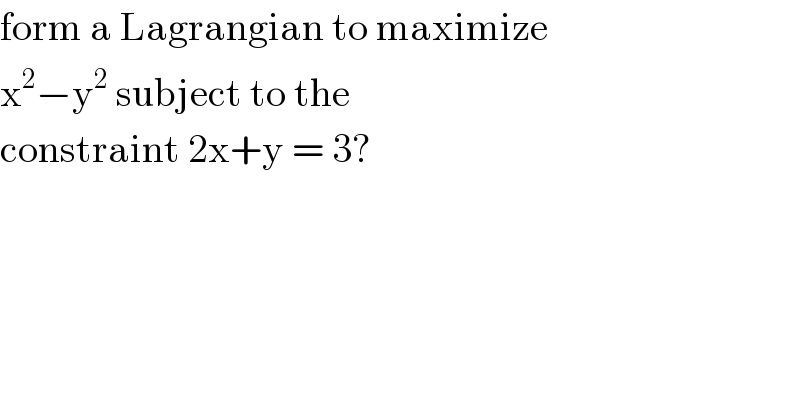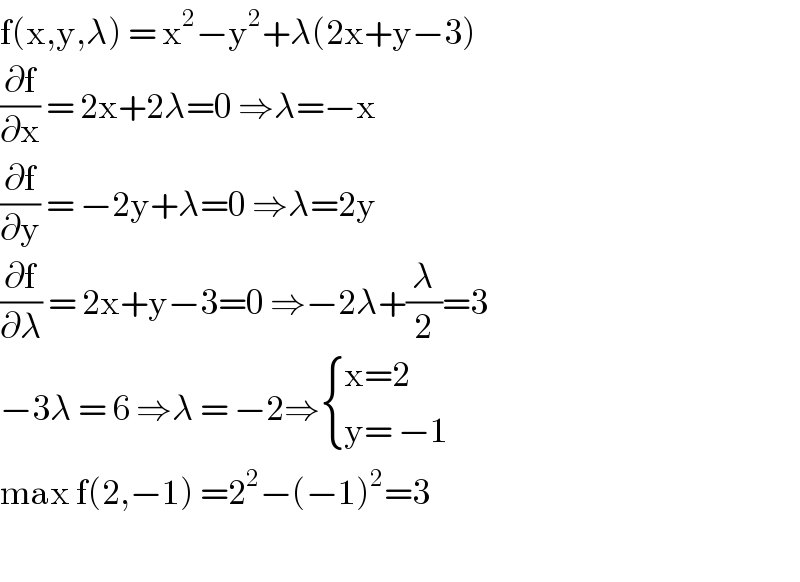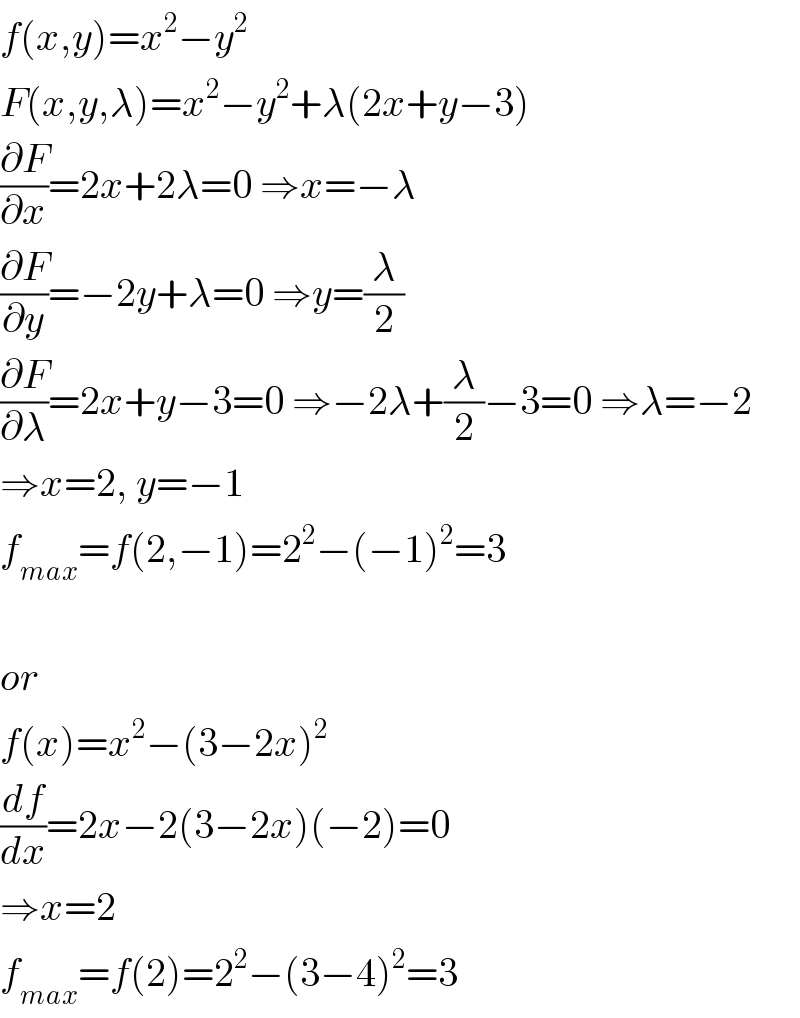
Question and Answers Forum
Question Number 95924 by i jagooll last updated on 28/May/20

Commented by john santu last updated on 29/May/20

Answered by mr W last updated on 28/May/20

| ||
Question and Answers Forum | ||
Question Number 95924 by i jagooll last updated on 28/May/20 | ||
 | ||
Commented by john santu last updated on 29/May/20 | ||
 | ||
Answered by mr W last updated on 28/May/20 | ||
 | ||
| ||